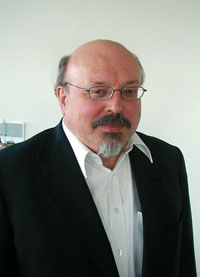
ERCIM News 66July 2006Special theme: European Digital Library Contents This issue in pdf Subscription Archive: Next issue: October 2006 Next Special theme: |

 Keynote
KeynoteHorst Forster, Director Content, Directorate General Information Society and Media, European Commission
Earlier this year, the Commission unveiled a roadmap that will see to the realization by 2010 of a distributed European library presence (also involving archives and museums). This roadmap sets clear targets: full cooperation between Europe’s national libraries by the end of this year, digitized objects increasing from 2 million in 2008 to 6 million in 2010, and support for multilingual access. It builds on The European Library, a partnership between national libraries that provides an organizational nucleus for further developments.
Large-scale digitization requires that Member States and institutions ramp up their efforts, as well as making improvements in the efficiency and sophistication of processing and indexing methods for digitized data.
Most current digitization initiatives concentrate on material in the public domain. This creates the risk of fostering a 20th century black hole in our organised knowledge: in a world where increasingly the Web is the sole source of information, we would banish 20th century works to digital oblivion. For the audiovisual world, which was essentially born in the 20th century, this is particularly critical. Accepted ways must therefore be found that will ensure digitized copyrighted and orphan materials are accessible on the Internet. The High-Level Group on Digital Libraries set up by Commissioner Reding started its work earlier this year by looking into this subject. There is also substantial research work to be carried out.
What are the research issues to be addressed in this area, and how can the research community contribute? Over the past four years, the European Commission has already invested more than 100 M€ in funding for digital libraries research. This needs to be stepped up in the 7th Framework Programme. A solid body of existing research is creating the building blocks for a European digital library. Topics of immediate concern revolve around more sophisticated treatment of digitized materials; automated indexing of text, sound and images; improved multilingual search engines; services supporting annotations and collaborative work. The work and the results of the research community need however to be anchored in the needs of users, whether these be the owners and creators of content or the end user.
The first universal library in Alexandria burnt down 2000 years ago. Our digital libraries may face an equivalent loss if the question of how to preserve digital content is not adequately addressed. A number of ongoing Commission-funded projects are working on the integration of digital preservation tools into workflows and the preservation of different digital formats, including high-volume scientific data and multimedia music. This creates a baseline for future research.
I have no doubts that we shall reach our targets by 2010. The future will tell whether the European Digital Library will be more durable than the Library of Alexandria.
Horst Forster